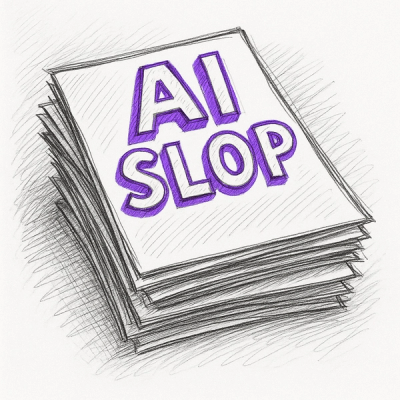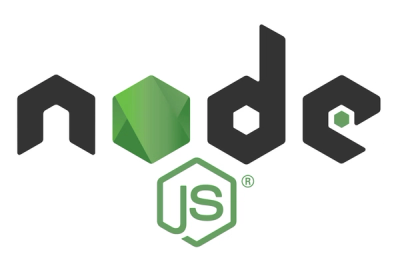
Security News
Django Joins curl in Pushing Back on AI Slop Security Reports
Django has updated its security policies to reject AI-generated vulnerability reports that include fabricated or unverifiable content.
validation-framework-ts
Advanced tools
Validating object state can be difficult to do correctly, but failing to do so can cause many different types of issues: invalid data being stored in the database, users being allowed to perform actions they weren't supposed to, applications getting into an invalid state, etc. This is where Validation Framework comes in. It allows programmers to validate objects in a simple and extensible way.
Object can be validated partially by validating the value of a specific property or as a whole by validating the values of all its properties.
When using the Validation Framework for object validation the programmer has two options of including the validation functionality:
By inheriting from the Validatable class:
import { Validatable } from "validation-framework-ts";
export class Example extends Validatable
{
}
Sometimes you might not have the option of inheriting from a certain class. In such a case, you can implement the IValidatable interface:
import { IValidatable, ValidatableExtensions, ValidationMessageCollection } from "validation-framework-ts";
export class Validatable implements IValidatable
{
public getActiveValidationContexts(): string[]
{
return [];
}
public isValid(propertyName?: string): boolean
{
return !this.validate(propertyName).hasErrors;
}
public validate(propertyName?: string): ValidationMessageCollection
{
return ValidatableExtensions.validate(this, propertyName, this.getActiveValidationContexts());
}
}
By choosing either of the two options and with the help of extension methods, you can do the following:
let example = new Validatable();
let isObjectValid = example.isValid();
let objectValidationMessages = example.validate();
let isPropertyValid = example.isValid("name");
let propertyValidationMessages = example.validate("name");
The easiest way of validating properties is by using validation decorators:
import { CannotBeLongerThan, CannotBeNullOrEmpty, MustMatch, Validatable } from "validation-framework-ts";
export class Example extends Validatable
{
@MustMatch(/^[\w ]+$"/)
@CannotBeLongerThan(20)
@CannotBeNullOrEmpty()
public name: string;
}
The example above validates that value of property name:
How to perform validation:
import { ValidationMessageCollection } from "validation-framework-ts";
let example: Example;
let isValid: boolean;
let validationMessages: ValidationMessageCollection;
example = new Example();
example.name = "Test";
isValid = example.IsValid(); // isValid == true
isValid = example.IsValid("name"); // isValid == true
validationMessages = example.Validate(); // validationMessages.length == 0
validationMessages = example.Validate("name"); // validationMessages.length == 0
example.Name = null;
isValid = example.IsValid(); // isValid == false
isValid = example.IsValid("name"); // isValid == false
validationMessages = example.Validate(); // validationMessages.length == 1
validationMessages = example.Validate("name"); // validationMessages.length == 1
validationMessages.first.message; // "Value cannot be null or empty."
validationMessages.first.propertyName; // "name"
Validation framework contains a large number of validators to help you easily set validation conditions on properties. For example:
and many more. See the complete list down below. They all start with either "Must" or "Cannot".
Using validation decorators is simple and requires little code to write, keeping your classes short and easy to understand. Making your own custom validation decorators is easy to do (see section on extending Validation Framework). Not all validation decorators can be used with all property types. For example using MustMatch validation decorator on a number property makes no sense and will be ignored:
import { MustMatch, Validatable } from "validation-framework-ts";
export class Example extends Validatable
{
@MustMatch(/^[\w]+$/)
public length: number;
}
let example: Example;
example = new Example();
example.length = 2;
example.isValid(); // true
example.isValid("length"); // true
All validators must check if value type is compatible with their validation procedure. If not, they should return true as a way of gracefully handling invalid value type.
Using validation decorators may not be flexible enough in all scenarios. In that case you have the option of performing validation within the validate() method:
public validate(propertyName?: string): ValidationMessageCollection
{
// always call base class validation method first to execute decorator validation
let validationMessages = super.validate(propertyName).toArray();
// custom validation in code
if (propertyName === null || // propertyName == null means all object's properties are being validated
propertyName === "phoneNumber")
{
if (!this.phoneNumber.startsWith("+") &&
!this.phoneNumber.startsWith("00"))
{
// append custom validation messages
validationMessages.push(new ValidationMessage("Phone number must be in international format.", this, "phoneNumber"));
}
}
return new ValidationMessageCollection(validationMessages);
}
Make sure you call the super.validate(...) method at the beginning of the method; otherwise decorator validation will be skipped!
The result of validation is a collection of validation messages. If the object or property is valid, the validation message collection will contain no validation error message items. However if the object or property is invalid, the validation message collection will contain items describing validation issues.
A validation message contains the following properties:
The validation message collection is always ordered descending by validation priority (by default 0).
If you're interested in a certain level of validation message messages you have the option of filtering them:
validationMessages.hasErrors; // true if contains any error messages
validationMessages.hasWarnings; // true if contains any warning messages
validationMessages.hasInfos; // true if contains any info messages
validationMessages.errors; // only error messages
validationMessages.errors.first; // the first error message or null
validationMessages.warnings; // only warning messages
validationMessages.warnings.first; // the first warning message or null
validationMessages.infos; // only info messages
validationMessages.infos.first; // the first info message or null
validationMessages.filter("name"); // only validation messages for property name
validationMessages.toArray(); // converts the collection to an array
A collection of validation messages can be merged in the following way:
var mergedValidationMessage = validationMessages.toString(); // all validation messages separated by new line
Every validation decorator has a default validation message provided by the underlying validator class, however you do have the option of assigning a custom one:
@CannotBeNullOrWhitespace("Value is mandatory.")
public name: string;
Every validation decorator has a default validation level set to error provided by the underlying validator class, however you do have the option of assigning a custom one:
@CannotBeNullOrWhitespace(null, ValidationLevel.warning)
public name: string;
You can choose between error, warning or info. If the validation message collection contains no errors it will be considered valid.
Sometimes you want the validation decorators to be executed only in certain cases. This is where the validation context comes in. The default validation context is always used (ValidationContext.default), which has actually null as a value. But let's say, you want to use a validation only if the object has not yet been saved to the database:
import { CannotBeNull, Validatable } from "validation-framework-ts";
export class Example extends Validatable
{
public id: number = -1;
@CannotBeNull() // always validated
public created: Date | null;
@CannotBeNull(null, null, "existing") // only when the validation context "existing" is active
@MustBeNull(null, null, "new") // only when the validation context "new" is active
public modified: Date | null;
public getActiveValidationContexts(): string[]
{
return this.id === -1 ? ["new"] : ["existing"];
}
}
In this case property created must always have a value present, but property modified must have a value only when the active validation contexts contain "exiting" (property id > -1). If the active validation context contain "new", property modified is not allowed to have a value. Default validation context will always be validated, but you have the option of adding as many different active validation contexts as needed that change according to the internal state of the object by overriding the getActiveValidationContexts() method.
Sometimes you have multiple validation rules that can be invalid at the same time:
@MustMatch(/^[0-9]+$/)
@CannotBeLongerThan(10)
@CannotBeNull()
public name: string;
For example:
example.name = "aaaaaaaaaaaaaaaaaaaaaaaaa";
let validationMessages = example.validate("name");
// validationMessages.length === 2
// validationMessages[0].message === "Value must match ^[0-9]+$."
// validationMessages[1].message === "Value cannot be longer than 10 items."
In such a case you might want only one rule to be active at a time. This is where you can use validation priority to specify the order of rules being evaluated. Highest validation priority starts with 0 (default validation priority) and decreases with incrementation.
@MustMatch(/^[0-9]+$/, null, null, null, 2)
@CannotBeLongerThan(10, null, null, null, 1)
@CannotBeNull(null, null, null, 0)
public name: string;
In this case there will be only one item in the validation message collection contributed by the @CannotBeLongerThan decorator, since it has a higher priority than the @MustMatch decorator:
example.name = "aaaaaaaaaaaaaaaaaaaaaaaaa";
var validationMessages = example.validate("name");
// validationMessages.length == 1
// validationMessages[0].message == "Value cannot be longer than 10 items."
Every validation decorator will provide a default validation message or validation message template (in case the message will contain parameters, like "Value must be greater than 5."). You have the option of assigning a custom delegate that will be used to localize that template:
// assign a custom validation message template localization delegate
Validator.getLocalizedValidationMessage = (validationMessageTemplate) => this.getLocalizedMessage(this.language, validationMessageTemplate);
// the localization function tha translates default
private function getLocalizedMessage(language: string, validationMessageTemplate: string)
{
if (language == "Slovenian")
{
if (validationMessageTemplate == "Value cannot be null")
{
return "Vrednost ne more biti prazna";
}
}
return null;
}
Make sure you do this before you start performing validations. If no localized message is returned, the default validation message provided by the validator will be used.
All validation decorators exist in their Cannot and Must form. All validation decorators have a standard list of parameters (custom validation message template, validation level, validation context, validation priority). If any of them is omitted or set to null or undefined, the default value provided by the underlying validator will be used. Some validation decorators have an extra parameter (e.g. CannotBeLongerThan requires the maximum length). The list below only contains the Cannot decorators, but every Cannot decorator has a matching Must decorator.
| decorators | applies to | default validation message template |
|---|---|---|
| @CannotBeEqualTo(value) | objects | "Value cannot be equal to {0}." |
| @CannotBeInstanceOf(type) | objects | "Value cannot be instance of {0}." |
| @CannotBeNull() | objects | "Value cannot be null." |
| @CannotBeOneOf([]) | objects | "Value cannot be one of: {0}." |
| @CannotBeTypeOf(type) | objects | "Value cannot be type of {0}." |
| @CannotBe((value: any) => boolean) | objects | "Value cannot be equal to the result of the expression." |
| @CannotBeEmpty() | arrays / strings | "Value cannot be empty." |
| @CannotBeEqualToArray([]) | arrays | "Value cannot be equal to {0}." |
| @CannotBeLongerThanOrEqualTo(maxLength) | arrays / strings | "Value cannot be longer than or equal to {0} items." |
| @CannotBeLongerThan(maxLength) | arrays / strings | "Value cannot be longer than {0} items." |
| @CannotBeNullOrEmpty() | arrays / strings | "Value cannot be null or empty." |
| @CannotBeShorterThanOrEqualTo(minLength) | arrays / strings | "Value cannot be shorter than or equal to {0} items." |
| @CannotBeShorterThan(minLength) | arrays / strings | "Value cannot be shorter than {0} items." |
| @CannotContainDuplicates() | arrays | "Value cannot contain duplicates." |
| @CannotContainNull() | arrays | "Value cannot contain null." |
| @CannotContainOnlyNull() | arrays | "Value cannot contain only null." |
| @CannotContain((value: any) => boolean) | arrays | "Value cannot contain the specified expression." |
| @CannotBeLowerCase() | strings | "Value cannot be lower case." |
| @CannotBeNullOrWhitespace() | strings | "Value cannot be null or whitespace." |
| @CannotBeTitleCase() | strings | "Value cannot be title case." |
| @CannotBeUpperCase() | strings | "Value cannot be upper case." |
| @CannotBeValidDate() | strings | "Value cannot be a valid date." |
| @CannotBeValidFloat() | strings | "Value cannot be a valid float number." |
| @CannotBeValidInteger() | strings | "Value cannot be a valid integer number." |
| @CannotMatch(regex) | strings | "Value cannot match {0}." |
| @CannotBeBetween(minValue, maxValue, inclusive) | numbers / strings | "Value cannot be between {0} and {0} [inclusive]." |
| @CannotBeFloat(maxDecimalPlaces) | numbers | "Value cannot be a float number precise to {0} decimal places." |
| @CannotBeGreaterThanOrEqualTo(maxValue) | numbers / strings | "Value cannot be greater than or equal to {0}." |
| @CannotBeGreaterThan(maxValue) | numbers / strings | "Value cannot be greater than {0}." |
| @CannotBeInteger() | numbers | "Value cannot be an integer number." |
| @CannotBeLessThanOrEqualTo(minValue) | numbers / strings | "Value cannot be less than or equal to {0}." |
| @CannotBeLessThan(minValue) | numbers / strings | "Value cannot be less than {0}." |
| @CannotBeDateInTheFuture() | dates | "Value cannot a date in the future." |
| @CannotBeDateInThePast() | dates | "Value cannot a date in the past." |
| @CannotBeDate() | dates | "Value cannot a date without time." |
| @CannotBeToday() | dates | "Value cannot be today's date." |
If the validation descriptor is not on the list, it's easy to create a custom one. Make sure you extend the Validator class, pass the default constructor parameters to the parent constructor and add additional ones if necessary.
Make sure you implement:
Example:
import { ValidationLevel, Validator } from "validation-framework-ts";
export class MustMatchValidator extends Validator
{
constructor(public regex: RegExp, message: string | null | undefined, validationLevel: ValidationLevel | null | undefined, validationContext: string | null | undefined, validationPriority: number | null | undefined)
{
super(message, validationLevel, validationContext, validationPriority);
cannotBeNull(regex);
}
public isValid(value: any): boolean
{
if (isNull(value))
{
return true;
}
else if (typeof value === "string")
{
return isMatch(value, this.regex);
}
else
{
return true;
}
}
protected getDefaultMessage(): string
{
return "Value must match {0}.";
}
protected getMessageParameters()
{
return [this.regex];
}
}
Tip: make sure you check the value type in the isValid() method and return true if the value doesn't correspond to the expected type. That way validators will just be ignored if used on the wrong property type.
After implementing your validator, you need to expose its functionality as a validation decorator.
import "reflect-metadata";
import { MustMatchValidator } from "./must-match.validator";
import { getValidationDecorator, ValidationLevel } from "validation-framework-ts";
export function MustBeValidCreditCardNumber(message?: string, validationLevel?: ValidationLevel, validationContext?: string | null, validationPriority?: number)
{
return getValidationDecorator(new MustMatchValidator(message, validationLevel, validationContext, validationPriority));
}
After that you can use the custom validation decorator just like any other.
import { MustMatch } from "./must-match.decorator";
export class Model extends Validatable
{
@MustMatch(/^[0-9]{12}$/)
public creditCardNumber = "";
}
Instructions:
You should always initialize your properties. If a property is not initialized it will not show up on the list of objects properties and the validation decorators will not get validated.


Example of form validation using the Validation Framework in an Angular application with Twitter Bootstrap:

Example of form validation localization using the Validation Framework in an Angular application with Twitter Bootstrap:

You can view the complete example at ./examples/angular.
Run the following console command:
npm i validation-framework-ts
Or just simply add reference in your packages.json file:
"dependencies": {
"validation-framework-ts": "1.0.0"
}
and then install the package via NPM:
npm install
Simply include the ValidationFramework decorators in your script:
import { CannotBeNull, MustMatch, Validatable } from "validation-framework-ts";
...
export class Model extends extends Validatable
{
@MustMatch(/^[A-Z][a-z]*$/)
@CannotBeNullOrWhitespace()
public name= "";
}
Or use a namespace:
import * as vf from "validation-framework-ts";
...
export class Model extends extends vf.Validatable
{
@vs.MustMatch(/^[A-Z][a-z]*$/)
@vs.CannotBeNullOrWhitespace()
public name= "";
}
FAQs
Validation framework for TypeScript and JavaScript
The npm package validation-framework-ts receives a total of 1 weekly downloads. As such, validation-framework-ts popularity was classified as not popular.
We found that validation-framework-ts demonstrated a not healthy version release cadence and project activity because the last version was released a year ago. It has 1 open source maintainer collaborating on the project.
Did you know?

Socket for GitHub automatically highlights issues in each pull request and monitors the health of all your open source dependencies. Discover the contents of your packages and block harmful activity before you install or update your dependencies.

Security News
Django has updated its security policies to reject AI-generated vulnerability reports that include fabricated or unverifiable content.

Security News
ECMAScript 2025 introduces Iterator Helpers, Set methods, JSON modules, and more in its latest spec update approved by Ecma in June 2025.

Security News
A new Node.js homepage button linking to paid support for EOL versions has sparked a heated discussion among contributors and the wider community.